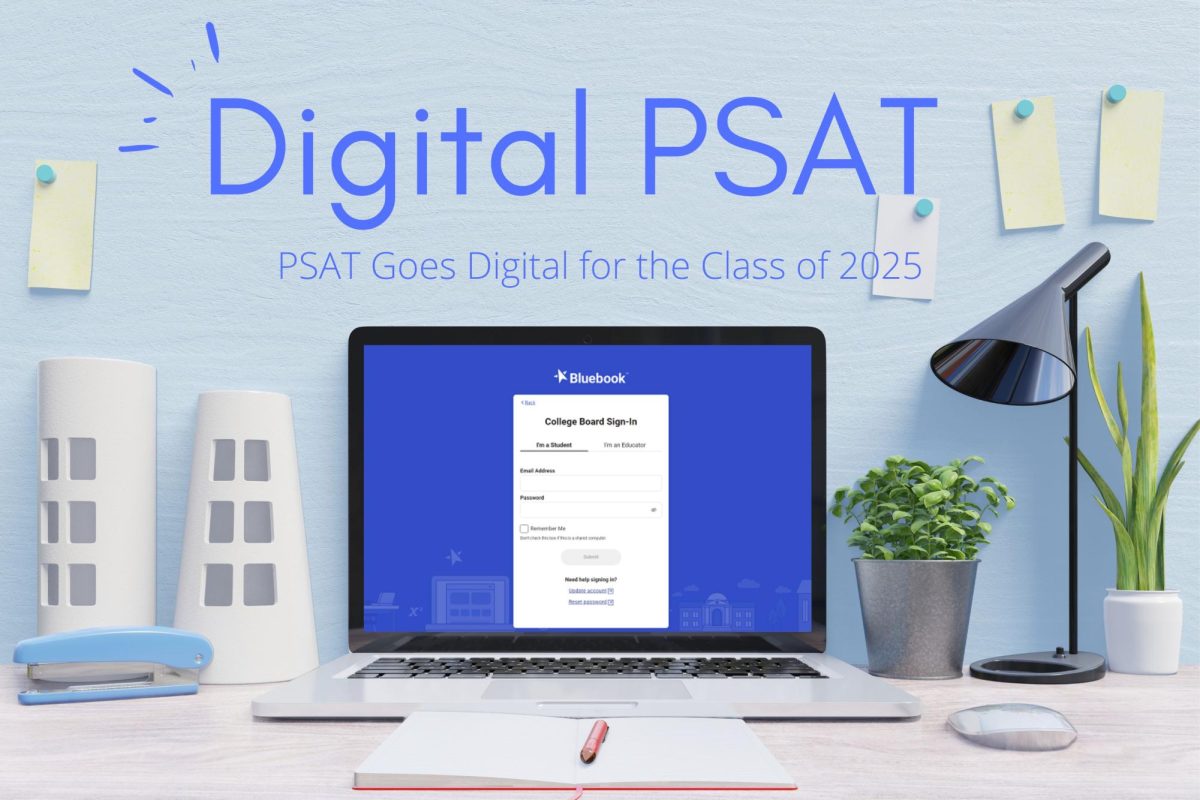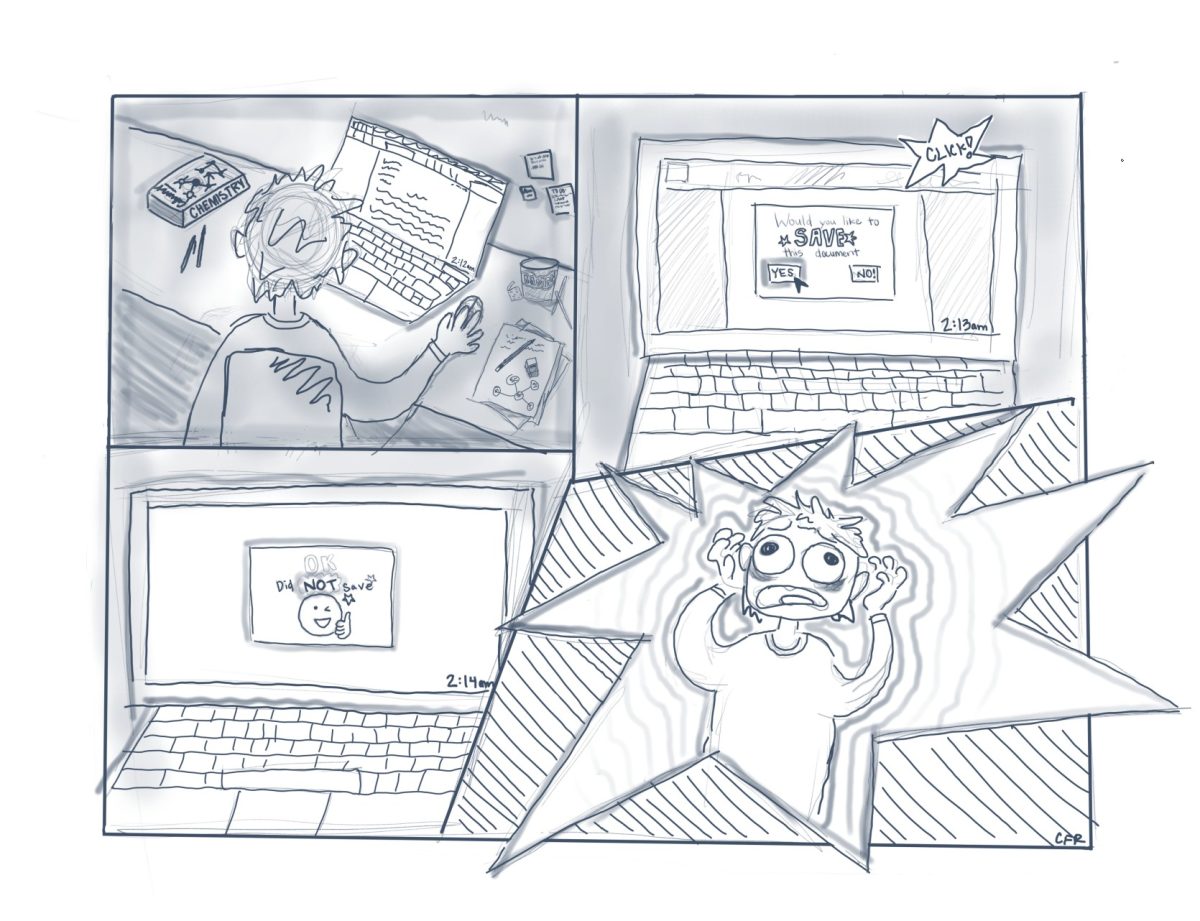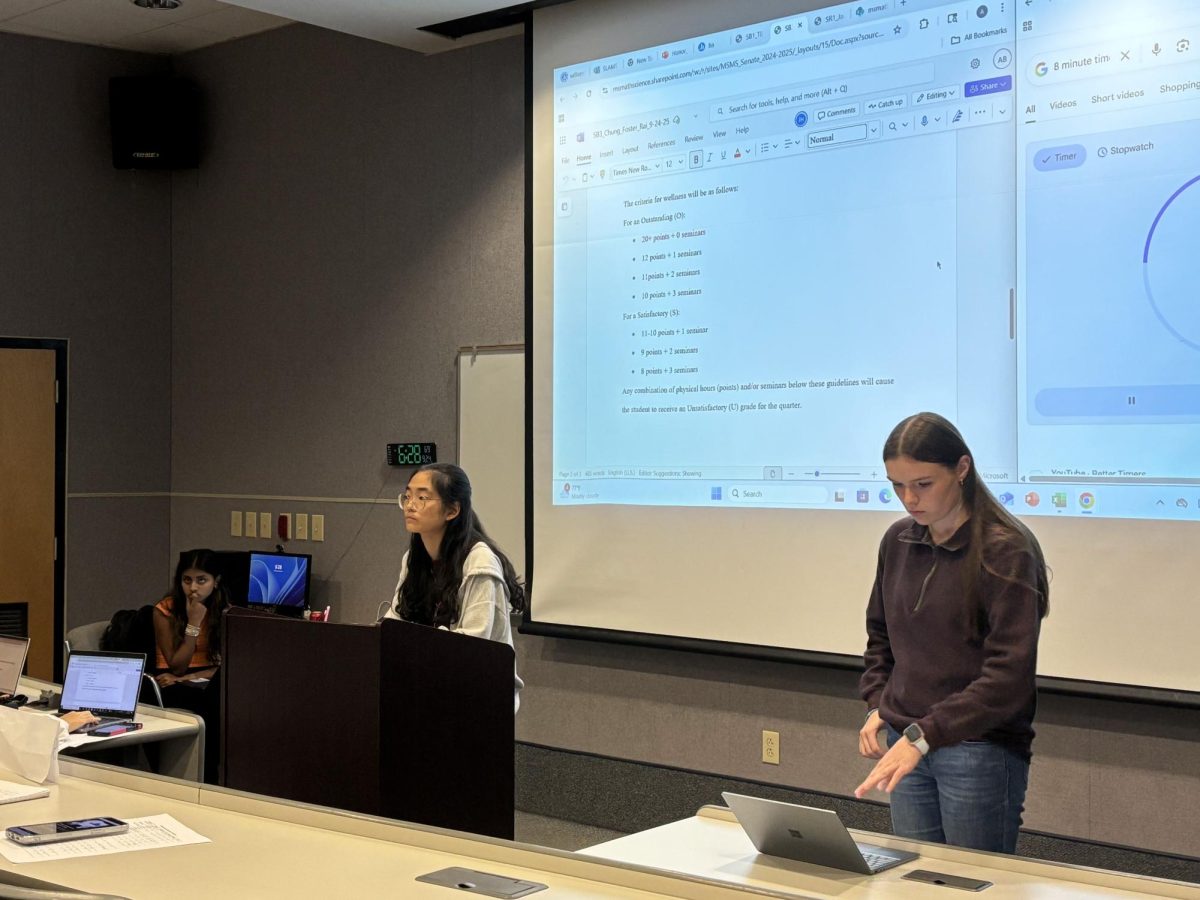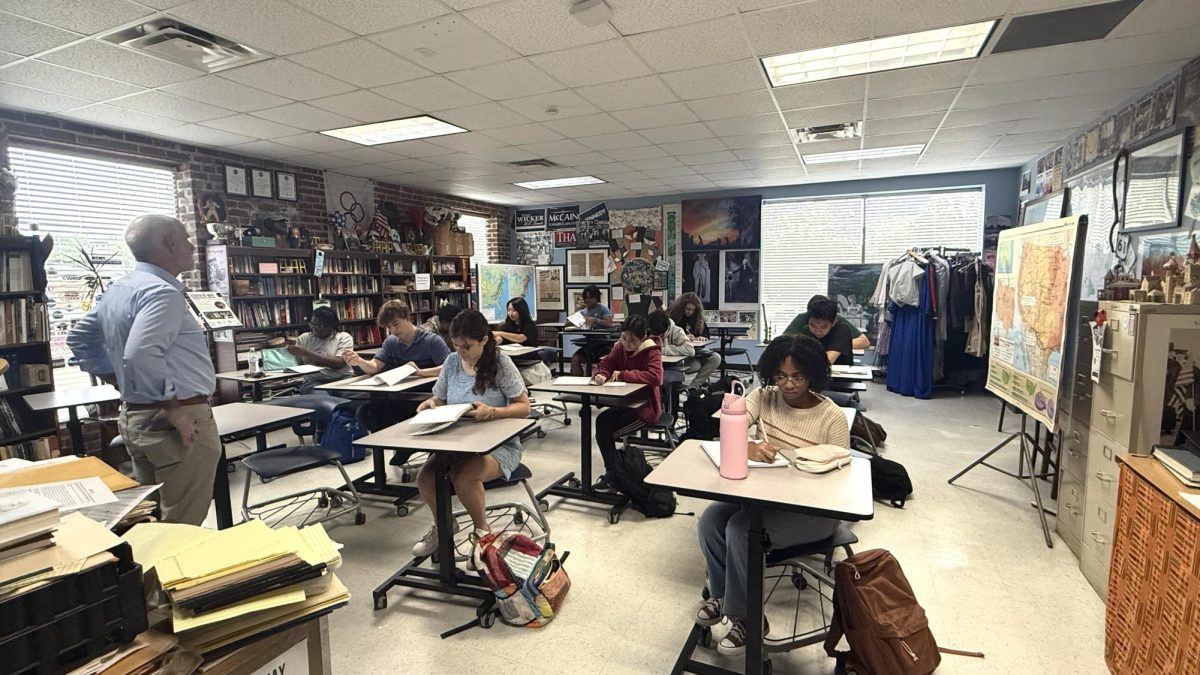As the fall semester unfolds, juniors are not only tackling the challenges of a new academic year, but also preparing for the Preliminary SAT. What makes this year distinct is the transition to the digital form of the test. The College Board announced in January the PSAT and its counterpart, the SAT, are moving from paper to a digital format this year, generating both excitement and concern among students.
Junior Yash Malhotra said there are benefits to both ways of administering the test.
“Taking it [with] paper and pencil would be better because you can easily annotate and refer to parts of the reading you have underlined,” Malhotra said. “On the other hand, the digital format tests your knowledge to the fullest due to the adaptive nature.”
The adaptive testing feature is unprecedented to College Board’s SAT Suite of Assessments. Rather than a fixed set of questions for every test-taker, the new format adjusts the difficulty level based on each student’s previous answers. The dynamic approach makes the test more tailored to individual capabilities but does not come without its issues.
Junior Ryan Wu said the adaptive nature of the test may lead to more emphasis on its first section.
“The adaptive test will require a lot more accuracy in the first part to not have your score capped out in the second part,” Wu said.
The College Board said PSAT scores will be released within four to six weeks of the test’s administration. This expedited feedback can be particularly beneficial for juniors planning to take the SAT, as it will provide more time for focused preparation based on PSAT performance.
“I think it will be a little less stressful because you can get test scores back much quicker,” Malhotra said.
Despite the expedited feedback, some juniors still do not welcome the move to digital testing. Junior Harrison Shao said he’s doubtful about the digital format and the transition may introduce more complications than solutions, inadvertently creating inequity issues.
“You have to figure out many technology issues and problems,” Shao said. “Everyone should get the same questions, so it is fair game.”
Preparation for the new digital test has also sparked conversation. Junior Ramon Munoz-Montiel believes the existing resources are sufficient for test preparation.
“Although the format is new, [I understand] the content and type of questions are still the same,” he said.
As test day nears, juniors navigate the mixed sentiments surrounding the digital shift.
“Both formats have positives, but I think how students perform between the two different tests won’t vary much,” Malhotra said.














